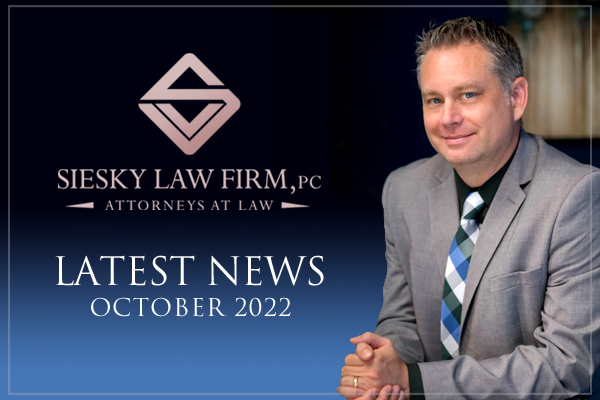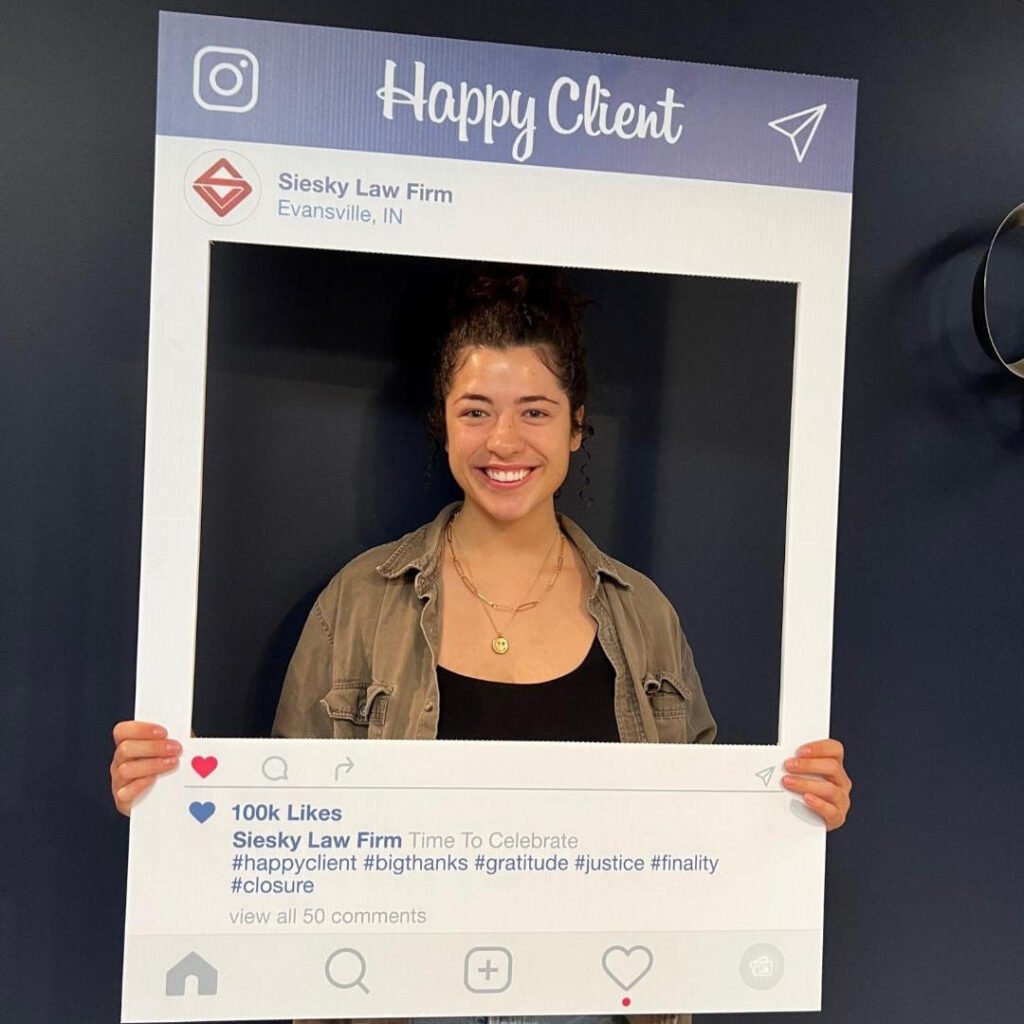
We’re excited that you’re here and thank you for taking the time to keep in touch with Siesky Law! We wanted to create a newsletter with the latest firm news and engaging articles, video and more on the latest law and community news. Please feel free to reach out to our firm with any questions or just to say hello, we’re always happy to hear from you.

A STATUTE OF LIMITATIONS – WHAT IS IT?
A statute of limitations, known in civil law systems as a prescriptive period, is a law passed by a legislative body to set the maximum time after an event within which legal proceedings may be initiated. In other words, a statute of limitations can be thought of as a time deadline.
When the time which is specified in a statute of limitations runs out, a lawsuit might no longer be filed or, if it is filed, it may be subject to dismissal if the defense against that claim is raised that the claim is time-barred as having been filed after the statutory limitations period.
The cause of action dictates the statute of limitations. Also, the amount of time allowed to bring a particular cause of action varies from state to state. In other words, the statute of limitations for a personal injury case in Indiana may differ from those for a personal injury case that occurred in a different state. These laws intend to facilitate resolution within a “reasonable” period of time.
In Indiana, examples of some of the statutes of limitations are detailed below:
| Injury to Person | 2 yrs. |
| Libel/Slander | 2 yrs. |
| Fraud | 6 yrs. |
| Injury to Personal Property | 2 yrs. |
| Professional Malpractice | 2 yrs. |
| Trespass | 2 yrs. |
| Collection of Rents | 6 yrs. |
| Contracts | Written: 10 yrs.; 6 yrs. for payment of money; Oral: 6 yrs., 2 yrs. employment agreements |
| Collection of Debt on Account | 6 yrs. |
| Judgments | 20 yrs. |
However, these time deadlines can be shortened or extended in some circumstances. Analysis of a statute of limitations also requires the examination of the facts of a particular case, of case law, and any associated statute of repose, tolling provisions, and exclusions. More than one statute of limitations may also apply to the case same case.
For instance, if you are injured in a car accident in Indiana, the statute of limitations dictates that you have two (2) years from the date of the accident to file a lawsuit. However, if the at-fault driver were in the course and scope of their employment with a City, County or State governmental agency, then an additional time deadline would also apply and require that within 180 days from the date of the accident, a Plaintiff (victim) serve a “Notice of Tort Claim” under the Indiana Tort Claims Act. Most people are unaware of this notice requirement.
Therefore, if you have a cause of action, it is crucial for you to consult with a knowledgeable attorney concerning the appropriate time deadlines for your case.
When it comes to your accident, it is essential to follow your medical provider’s orders for treatment and prescribed medications. In addition to the client’s health, if a client stops taking medication or stops treatment without a consult with their provider first, it can be used against them by the defense attorney or the insurance adjusters.
Siesky Law Firm has had several cases where our client received the wrong drug. Therefore, you also want to always check the label on your prescription bottle and the color, shape, and marking on the pills to ensure the prescription was prescribed and filled correctly. You can cross reference the appearance of your tablet with what is listed on drugs.com.

LEGAL TERMINOLOGY 101:
Contingency Fee – Rather than an hourly or fixed fee, a contingency fee is paid to an attorney when the attorney is successful in making a recovery on behalf of their client. The lawyer receives a percentage of the verdict or settlement amount. If there is no recovery for the client, there is no fee charged to the client.
Plaintiff – The plaintiff is the party or group of parties bringing the lawsuit. For example, if you slip and fall and sue the grocery store where the slip and fall occurred, you would be the plaintiff in the lawsuit.
Defendant -The plaintiff serves the complaint upon the defendant. The defendant is the party that is allegedly liable for the plaintiff’s injuries. In the previous example, the grocery store would be the defendant.

GLOBAL LEADERSHIP SUMMIT
For the last several years, the Siesky Law Firm team has attended the Global Leadership Summit, a 2-day catalytic experience of rich learning, new ideas, fresh perspectives, and inspiring stories from leading experts spanning a wide range of fields and backgrounds. This summit encompasses curiosity, change, growth mindset and encourages each participant to be a leader!
This year, our firm’s biggest takeaway came from Vanessa Van Edwards, who discussed the importance of being more intentional with our conversations and small talk to connect with those who matter to us. We were challenged to ask each other “Level 2” and “Level 3” questions outside the normal, “How was your weekend?” and “What’s your plan today?” so we could get to know them better.
So, what is Level 1, 2, and 3? Level 1 focuses on general traits and asks the basics like, what’s your occupation, what high school did you graduate from, and how many kids do you have? Level 2 focuses on personal concerns and asks more profound questions such as, what are your values, what motivates you, and what is a goal you are working towards? And Level 3 focuses on a self-narrative and gets deep by asking questions on how we make sense of our journey and purpose through life. Once you reach Level 3 with someone, you begin to uncover how they behave and what they believe.
In response to this takeaway from GLS, Siesky Law Firm developed a questionnaire for each team member to respond to some Level 2 questions. Below are the team’s responses to the question “What motivates you?” and what you’ll notice is just how different each answer truly is:
- Lane – “Part of it is the way I am wired. Part of it is our purpose to help our clients, and part of it is to be successful and provide for my teammates at work and family at home.”
- Dan – “Solving, or at least easing clients’ problems by working in and leading a team and getting a great result.”
- Doug – “Feeling that I’ve given my best effort, contributed to the cause, and helped someone out.”
- Rod – “The fear of failure.”
- Heidi – “Feeling appreciated.”
- Audria – “My desire to help my mother, children, and grandchildren.”
- Megan – “My children, my family, my need to travel and see the world, my spiritual journey, and my ultimate goal to retire early.”
- Taylor – “Feeling a sense of purpose in my work.”
- Jennie – “To be a reflection of God by doing my best and doing it for Him.”

OUR GREATEST REWARD: HAPPY CLIENTS
At Siesky Law Firm, we create an experience for our clients that makes them feel like they matter and are heard. We work hard to keep them updated along the process and answer any and all questions or concerns they may have. In some cases, our clients become like friends and family and we truly value their experience with our firm. Our purpose is to help them heal in many ways after devastating accidents and injuries. So, knowing that our team helped this client do exactly that, makes all the hard work well worth it.
